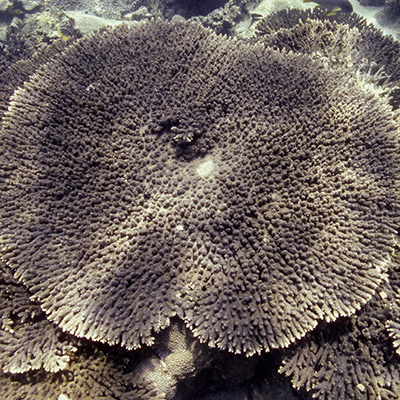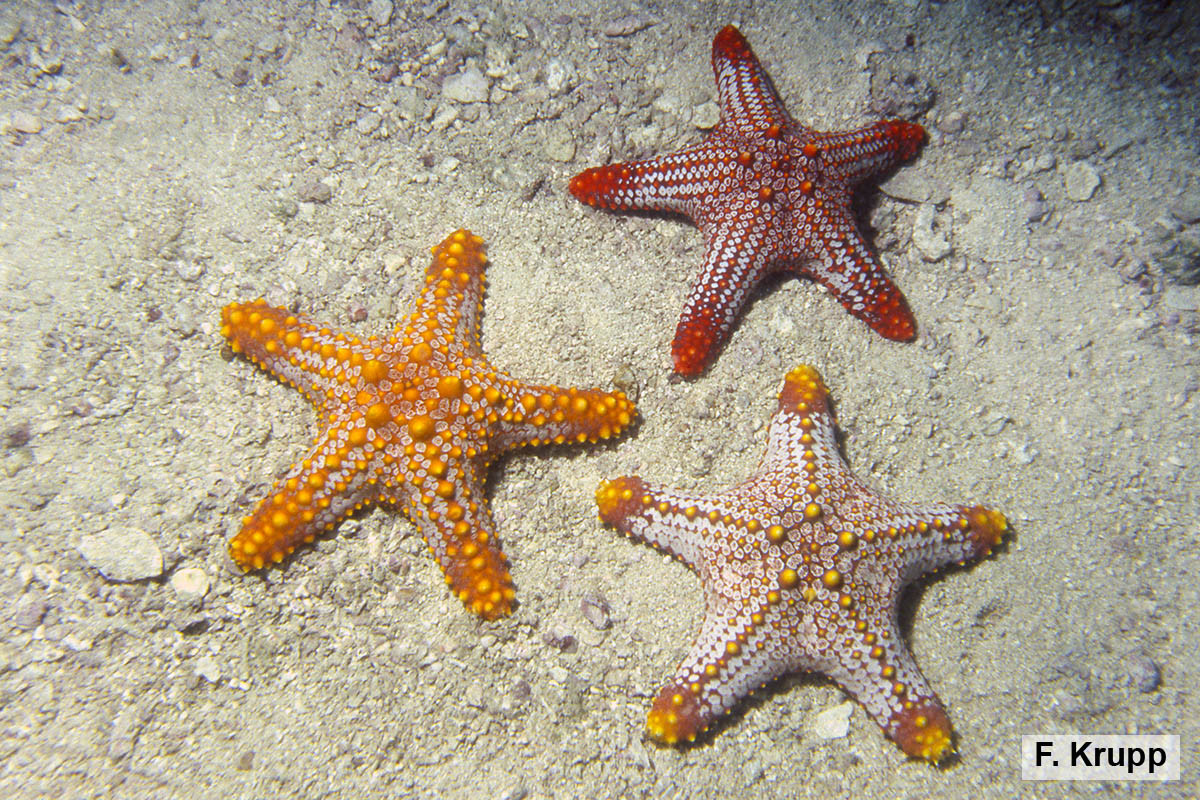Name: Pentaceraster mammillatus
Local name:
Scientific name: Pentaceraster mammillatus
Classification: Class – starfishes; order – valvatids (Valvatida); family – oreasterids (Oreasteridae)
Size: The diameter from armtip to armtip ranges between 14.5 and 30.0 cm.
Habitat:
Pentaceraster mammillatus lives in the subtidal on coarse sand or coral rubble, close to or on reef substrata, at 4 15 m depth. In oyster beds on Qatar’s east coast, it is one of the commonest asteroids, being a known predator of pearl oysters with the ability to open the shell and digest the oyster. Otherwise it feeds mainly on epibenthic film (micro-organisms growing on algae and seagrasses), surface detritus and dissolved organic substances. Since starfish have no hard mouth parts, they ingest food by everting their stomach through the mouth, engulfing the prey, secreting digestive fluids to liquefy its tissues and then suck the digested mass back in, together with the stomach. The flexibility of their skeleton enables them to upright themselves if overturned. Starfish are well known for their powers of regeneration and often regenerate lost or damaged arms. Although they lack developed eyes, they do have “eye spots”, an optic cushion of red-pigmented and light-sensitive cells, at the tip of each arm. Spread over the skin are neurosensory cells that are highly sensitive to both touch and chemical tastes; they are most prevalent in the suckers of the tube feet.
Distribution:
The species is known from the east coast of Africa, including Madagascar and Mauritius, through Red Sea and Arabian Gulf to Sri Lanka and the Bay of Bengal into the tropical Indo-Pacific.
Conservation status:
Pentaceraster mammillatus has not yet been assessed for the IUCN Red List of Threatened Species.
Description:
The stellate form of this starfish species, with five well-developed tapering arms projecting from a central disk, exhibits the characteristic five-rayed radial symmetry (pentamerism) of echinoderms. An internal skeleton composed of separate calcium carbonate plates, or ossicles (“little bones”), bound together by connective tissue, provides a rigid yet flexible structure. Forming the perimeter around the arms and disk are two rows of conspicuous marginal plates, which are strongly developed and carry spines that look like short stubby knobs or cones; the presence of spines in the interradial areas (“armpits”) is a distinguishing character. The body is massive, with broad and rounded interradial areas, the disk considerably elevated and crowned with five large conical spines, one on each primary plate near the base of an arm. The rest of the upper surface is adorned with longitudinal series of small, rounded granules. The thick arms are of moderate length, sloping laterally, rounded at the tips and triangular in cross-section. They bear heavy conical tubercles on the carinal (keel-forming) plates on their upper surface and have open furrows called ambulacral grooves on the underside, running from the central downward-facing mouth into each arm. Within these grooves, tentacle-like structures called tube feet protrude through openings in the skeletal plates to the outside. The tube feet are cylindrical and equipped with a sucking disk at the free end. They are the terminal extensions of the internal water vascular system, a network of interconnected fluid-filled canals, and can be extended and retracted by hydraulic pressure combined with muscular contraction, thus functioning in locomotion and respiration or in prey capture. The body surfaces are scattered with minute calcareous pincer-like structures called pedicellariae, which keep the skin free of small organisms and debris. Coloration is highly variable, even within the same population, but mostly uniform; it may be brilliant red, greenish, dark gray or another color, with the spines and tubercles almost always set off in a contrasting color.








